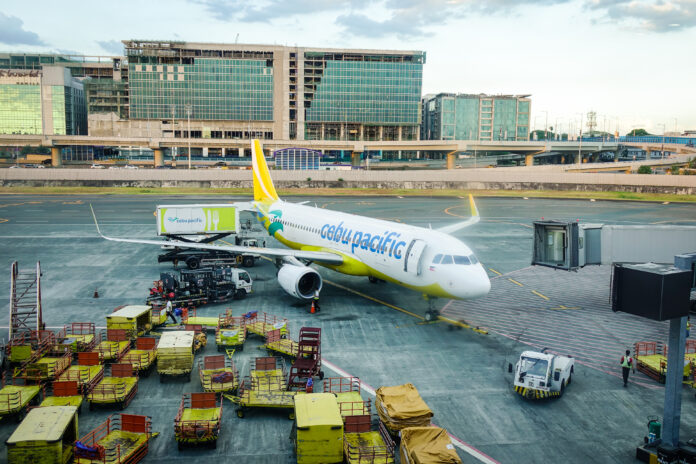Cebu Pacific’s passenger traffic jumped nearly 19 percent in March, as the Gokongwei-led carrier capitalized on higher seat capacity across both domestic and international routes, underscoring its aggressive post-pandemic growth strategy.
In a disclosure on Tuesday, Cebu Pacific reported flying 2.2 million passengers in March 2025, up 18.9 percent from 1.85 million in the same period last year. The airline attributed the growth to a 19.2 percent year-on-year increase in seat capacity, though its seat load factor (SLF) dipped slightly to 81.4 percent from 81.6 percent.
Domestic traffic remained the airline’s core growth driver, rising 20.2 percent year-on-year to 1.65 million passengers on 17.9 percent more seats, with a solid SLF of 84.1 percent. International passenger volume also posted healthy growth, up 15.2 percent to 551,000 passengers. However, the international SLF slipped to 74.3 percent, despite a 22.9 percent increase in available seats.
For the first quarter of 2025, total passenger volume surged 26.3 percent to 7 million, compared to 5.5 million during the same period last year. Domestic traffic rose 27.9 percent to 5.2 million passengers, while international passengers climbed 21.8 percent to 1.8 million. Cebu Pacific maintained a strong quarterly SLF average of 84.9 percent as total seat capacity expanded 24.8 percent to 8.2 million.
“Despite the shift of Easter from March last year into April this year, traffic growth and seat load factors remained robust across both networks,” said Xander Lao, Cebu Pacific president and chief commercial officer.
“For the first quarter overall, we have registered increases in load factor while growing capacity at circa 25%. This reinforces our positive outlook for the second quarter of this year,” he added.
Cebu Pacific, the country’s largest budget carrier, operates flights to 37 domestic and 26 international destinations across Asia, Australia, and the Middle East, positioning itself as a key player in the region’s budget air travel market.







